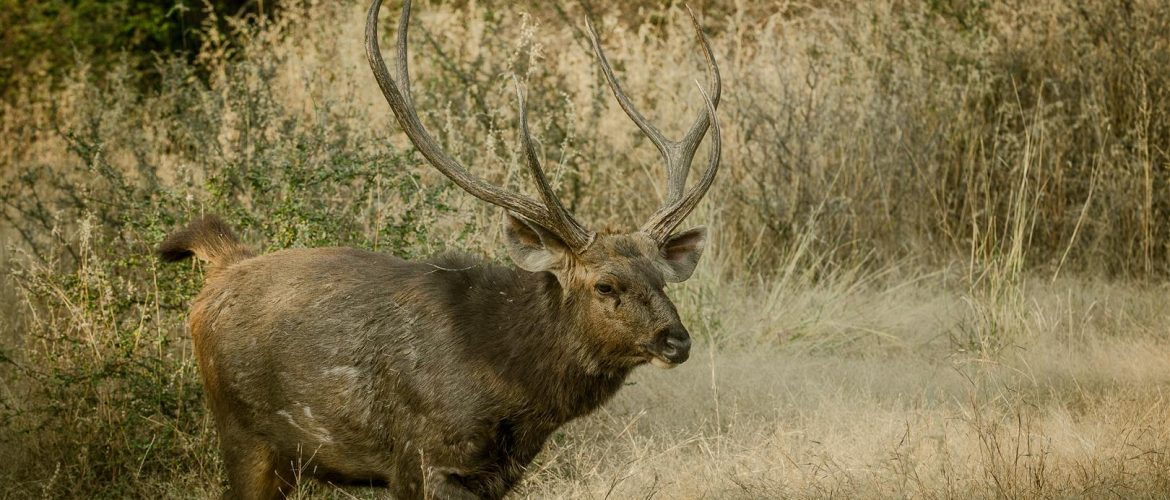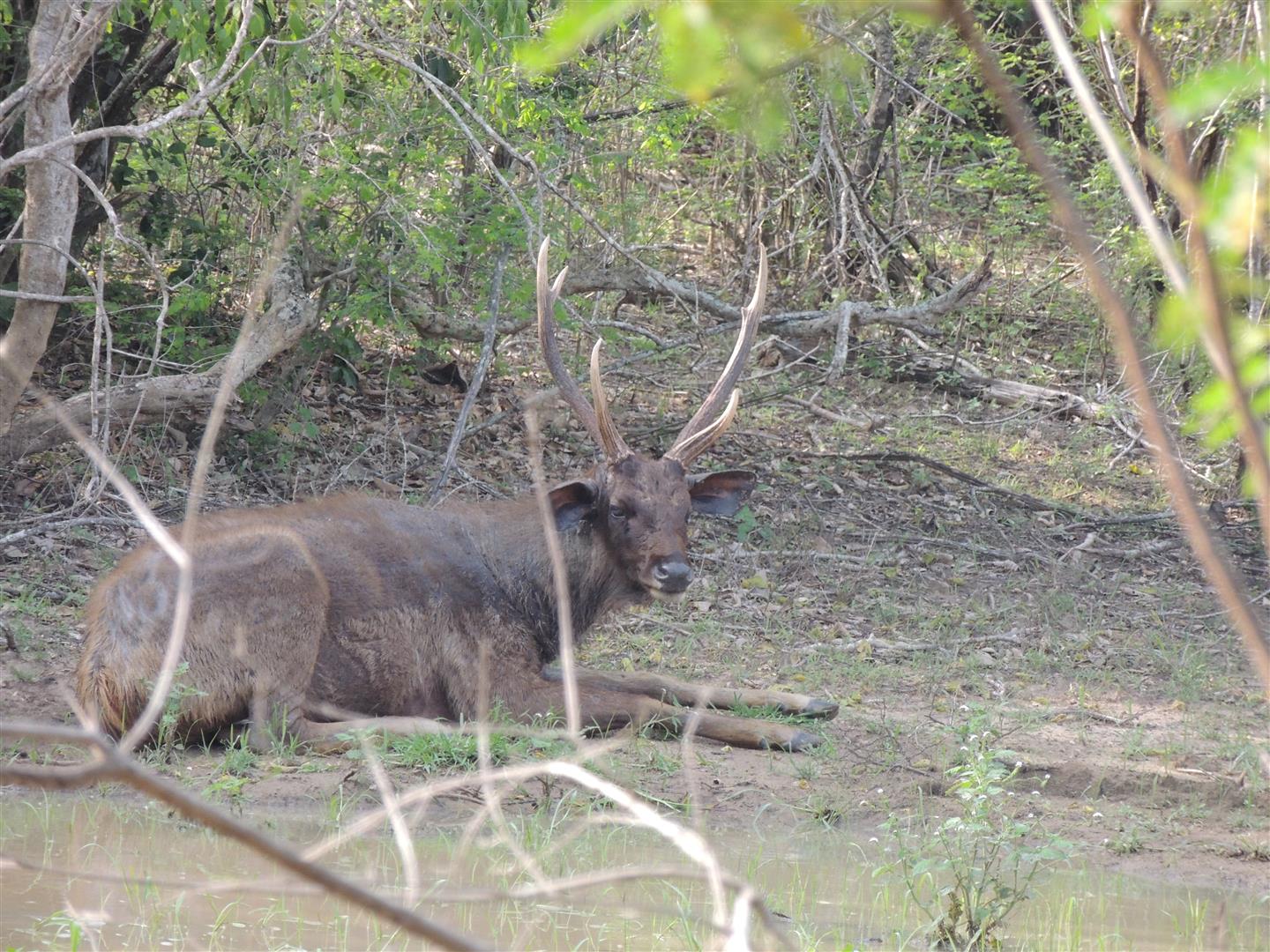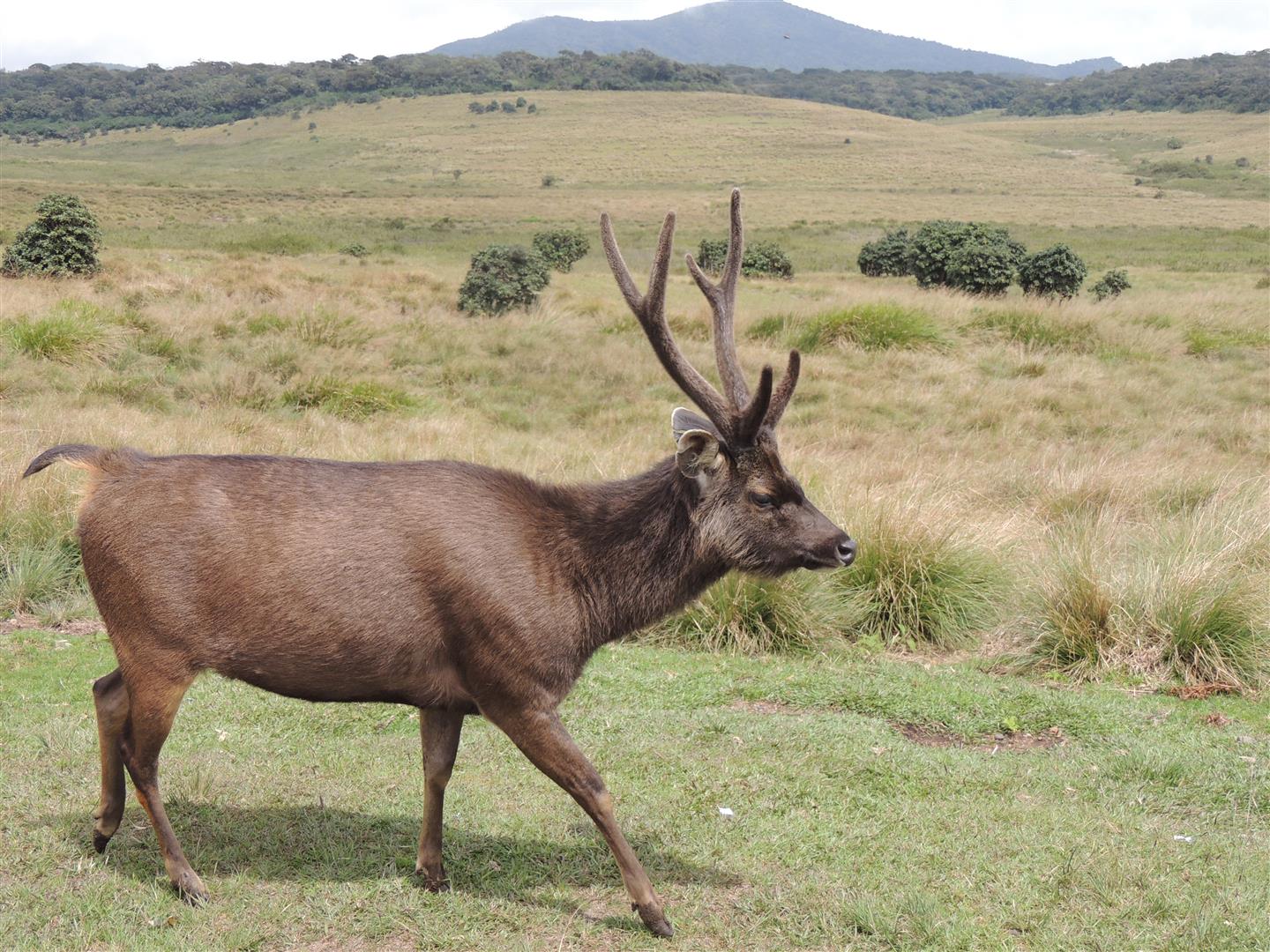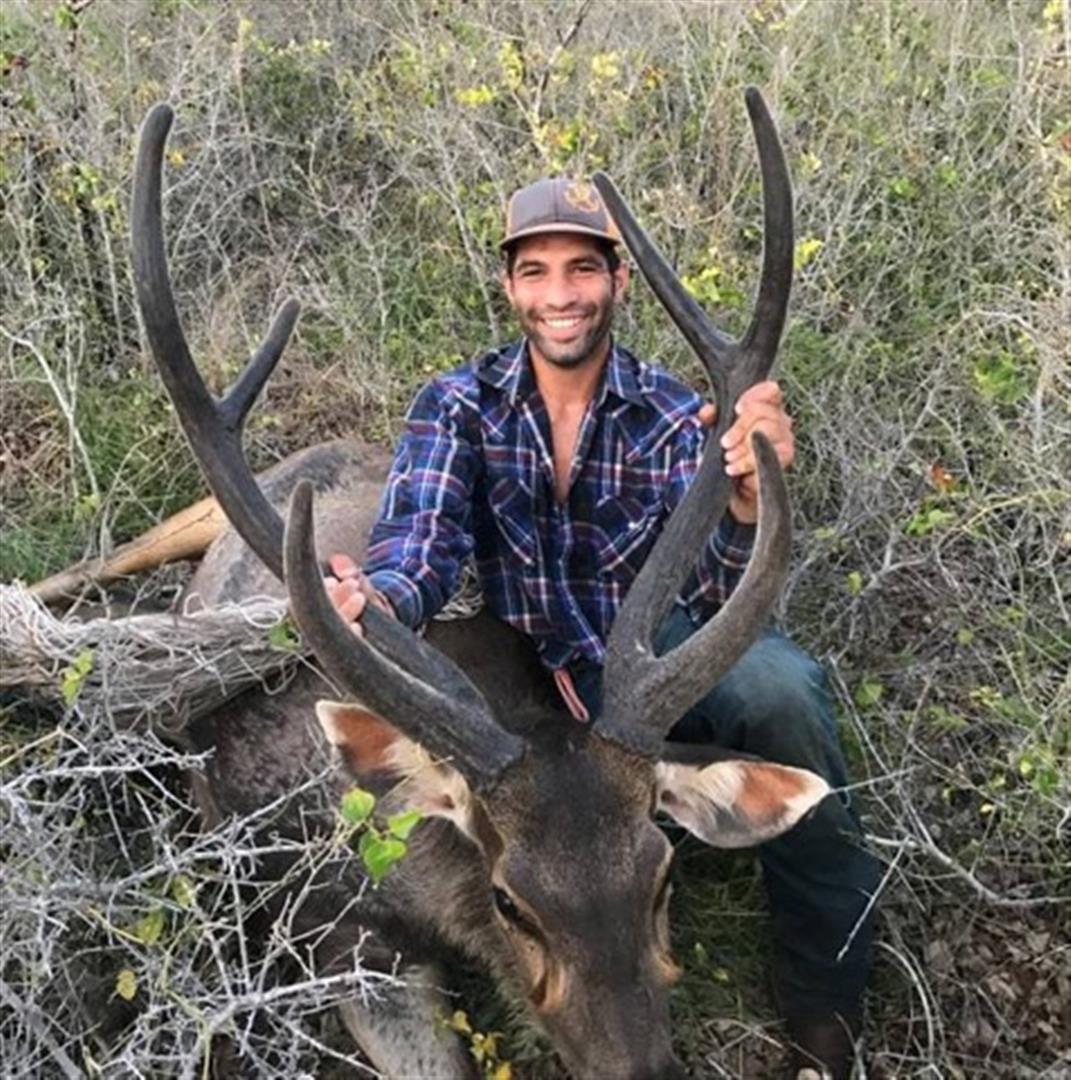$0.00
No products in the cart.

Sambar deer are without question the most successful of the six introduced deer species in Australia! What better species to commence a new series on than this challenging, handsome and remarkable deer.
The conclusion of my series ‘Hunting Basics’ (that was designed to primarily assist ‘learning deer hunters’) has lead to the challenging task of detailing the many deer species that inhabit our world. Throughout future years I intend to highlight one of the deer species of the world within each issue of this magazine. There are approximately 30 different species and over 60 different sub-species with many being rare.
Sambar deer (Indian Elk, Ceylon Elk,) are the second largest round-horned deer in the world with North American Wapiti (Elk) being the largest round-horn and Moose with its palmate antlers being the overall giant of the deer world. Sambar deer are widespread and native to the Indian subcontinent, southern China, and Southeast Asia that includes Burma, Thailand, Indochina, the Malay Peninsula, Hainan Island, Taiwan, Sumatra and Borneo. They have been very successfully introduced into the wild in Australia, New Zealand, and Florida and to a lesser extent California (USA), and enclosures in both Texas and South Africa. They have incorrectly been detailed as inhabiting several Pacific Ocean islands. I believe these locations have been confused with the diminutive Philippine Sambar that is not a Sambar as we know it; rather Philippine Brown Deer (Rusa Mariannis).

Like all deer species (and their sub species) deer rapidly adapt to the various habitats in which they live. Due to this their size and shape, including antlers, varies considerably between countries and regions. Larger Sambar can attain a body weight of 100 to 300kg. (220 – 660lb.) and stand as tall as 137cm (54 inches) at the withers (shoulder). Individuals belonging to the western subspecies (India and Sri Lanka) are larger than those from the east and they have occasionally been recorded weighing over 700lbs and measuring taller than 58 inches. Their antlers are typically 3 tines per side, up to 110 cm (43”) long and the early Bhopal (India) world record for length was 50 ½”. A cast antler found in the Khandesh district of India measured 52 inches. The New Zealand record for length is 40 ½” long and 40 ¼” wide and the biggest Australian ones are around 35” and increasing in size; 30 inches has always been regarded as a very big Sambar. To put this in perspective, during the 1970s there were four known 30” Australian trophies. During the early 80s one of Australia’s leading hound hunters told me there was only one true 30” Sambar being taken annually within Australia. Sambar is a secretive deer that predominantly prefers forested areas, but when in high populations and enjoying minimal hunting pressure they can be observed during mornings and evenings in adjoining open country. Sambar deer are nocturnal or crepuscular (preferring twilight or low light). They generally prefer to live in small groups where there are dominant females with fawns and yearlings. Stags predominantly prefer to live solitary except for periods in and around the rut (stags sometimes pair up during the velvet stage).
During 1861 one of the first shipments of Sambar (Ceylon Elk) were introduced to Australia when the Victorian Acclimatisation Society purchased 2 stags and 2 hinds that were shipped from Galle, Ceylon (Sri Lanka) by Mr. Edward Wilson in the ship Jeddo. One hind gave birth to a fawn during the voyage and one hind died. In 1862 five Sambar deer were being held in an enclosure in Royal Park and the following year these, the first Sambar, were released at Mount Sugarloaf, Kinglake (Bentley 1978). In 1871 there was seven Sambar held in Royal Park. Sambar deer were later released at Burrumbeet in Western Victoria (these eventually lead to establishing the Mount Cole herd), Mount Zero in the Grampians and Snake Island off Port Welshpool. Sambar were also held at Gembrook and later released. Bentley also states that the most important liberation took place in 1868 on ‘Harewood’ situated on the Koo-Wee-Rup Swamp and the Tobin Yallock Swamp in the vicinity of Tooradin. Several shipments of Sambar were made to the property and the owner Mr. William Lyall and his family became quite involved with their care. These deer originated from stock from both Ceylon and India. Within 10 years of their release it was agreed they had increased in sufficient numbers to allow the commencement of hunting. By the 1880s the deer were believed to number ‘some hundreds’. It was widely reported that the deer quickly spread both north and northeast along river systems and also southeast and wherever there was suitable habitat. There were additional, albeit vaguely reported, releases at several locations throughout Victoria and some of the herds from various release sites soon spread to join each other. The Australian Sambar was born! Some of the early liberations included additional Sambar from India and to a lesser extent Malaysian Sambar from Sumatra, Indonesia.
Sambar deer are, or at the very least were, also located on French and Snake Islands in Victoria and also on Cobourg Peninsula in the Northern Territory. I have observed them or their fresh sign at these locations with the exception of French Island that I have not visited. The herd on Cobourg has survived from releases after the abandon Victoria Settlement. They have not spread to any great extent and they have struggled and appear to be deficient in something. Maybe it’s just the climate and high temperatures.

Sambar have spread from the outskirts of Melbourne throughout Victoria’s Great Dividing Range well into New South Wales and a limited herd exists just to the south of Sydney that commenced from deer farm escapees (evidence exists of some hybridization with the local Rusa population). Due to strong increasing populations Sambar are frequently observed outside their main-range spreading into distant isolated pockets. They are renown for wandering long distance from main ranges. They now inhabit the lush Otway Ranges and I’m aware of further well-entrenched satellite-herds.
The Australian Sambar population appears to be predominantly from Sri Lankan origin (Strahan 1995).
The New Zealand Sambar originated from Ceylon also with 11 separate shipments made between 1875 and 1921. They currently exist in two major regions where the herds are fragmented, the coastal Manawatu and the central Lake Rotorua herds, on the North Island.
Sambar, traditionally inhabit tropical dry forests, tropical seasonal forests, sub tropical mixed forests, with conifers, broadleaved deciduous and broadleaved evergreen trees to tropical rain forest, and seldom moves far from water sources. They range from sea level to 3,500 m (11,500 ft.).
British Ceylon was an island colony between 1802 and 1948 that is now known as Sri Lanka. It has been greatly influenced by the previous British rule and the population loves cricket, volleyball, growing tea and cooking with its many varied spices and curries. Sri Lanka has endless streets of hundreds-of-thousands of Tuk Tuk’s, monkeys, mongrel brown dogs and Sambar deer! Recently while photographic-hunting Sri Lanka’s many national parks I captured Sambar in Yala N.P. on the south east coast lying alongside watercourses with the Indian Ocean in the background. As a contrast I also observed them in Horton N.P. in the central highland region of the island at 2,300 m (7,500 ft.). How adaptable and versatile they are! There are further national parks in various locations within Sri Lanka that hold Sambar. No hunting is permitted in Sri Lanka however poaching with bow and arrow, spear and by snaring methods occur. Sri Lanka’s Sambar and other wildlife (with the exception of Hog Deer) are well protected within its numerous National Parks and Reserves (approximately 23) that are liberally scattered around the entire country.

Horton Plains near Nuwara Eliya is the best location to view wild Sambar in Sri Lanka. Throughout the country national park gates are locked overnight and a standard 6am opening applies. Access is by arranged registered safari vehicle and guide only and tourists are not permitted to exit safari vehicles (unless in designated safe car parks and walking track areas). To view deer it’s wise to be awaiting the gate opening. Horton is a cloud forest area with a considerable circular walking track. Once inside the park the forest quickly opens to elevated gentle, winding, grassy valleys and we viewed Sambar in family groups of generally between two to eight with bachelor stags nearby. Although aiming to sight big antlered stags, my safari guide and driver arrived late and cost my wife Margaret and me precious early morning viewing. Sambar deer were numerous in the open grassland/tussock valleys and we photographed some with hard antler and some with fully formed velvet antlers (November) that I estimated around 27-29 inches in length. From careful study there appeared to be no obvious differences to our Australian Sambar. In fact the climb to Horton Plains passed through mountain sides of introduced blue gum eucalyptus forest and man-ferns with damp gullies and one could easily be hoodwinked into thinking it was Sambar country in Australia. We observed approximately 60 for the morning. Due to the ‘remain in vehicle policy’, the deer were unconcerned about vehicles approaching nearby however at sunrise were making their natural progression back to dense forest. I was left wondering what we may have missed! Some stags, although wild, had progressed to being semi-domesticated and they disregarded caution for the prospect of treats from tourists. After travelling to the commencement of the circular walking track that leads to ‘Worlds End’ we walked for some time and sighted additional young Sambar feeding hard alongside dense forest verges. Again I was left wondering what may have returned to the cloud forest before we walked into the more secluded sections of meandering valleys. Plenty of fresh deer sign was sighted crossing the designated track.

Yala National Park on the southeast coast of Sri Lanka is the most popular of the national parks and it’s instantly apparent why! Yala is a low-lying expanse with many coastal and inland flood plains, grassland, semi-open scrubland and rocky knolls. It’s not unlike some of the low-veldt of Africa and with a selection of wildlife including Elephant, Buffalo, Sloth Bear, Leopard, Chital, Sambar, Sri Lanka Wild Hog, Crocodile, small animals and abundant birdlife. It’s probably the closest thing to Africa I’ve witnessed, outside of Africa. It’s an amazing national park and Margaret and I, with our three guides, enjoyed several lengthy safari trips into its depths. Sambar deer are not plentiful in Yala, but I managed to photograph two smaller antlered stags while there. One was lying on a flood plain sand margin with the Indian Ocean in the background while the other was caught napping inside scrub area. The Sambar at elevation sported thick healthy hides however at sea level with constant 30 degree plus temperatures they were sparsely haired and didn’t appear to be as splendid as their ‘cooler climate brothers’. We searched the coastal flood plains, inland flood plains and after a few days arrived late afternoon in the grounds of ancient Sithulpawwa Buddhist Rock Temple with a history of 2,200 years. This was a site of several significant water storages and where our guides were familiar with approximately 12-14 Sambar that regularly visited. We arrived at primetime in late afternoon to be faced with numerous S.L. Wild Hogs and an Elephant but searches of the water storages and grounds failed to locate Sambar. Later that night we learnt how disappointed our guides were. We had enjoyed viewing and photographing large herds of Chital (next issue), had close encounters with elephant and consoled our guides by explaining our understanding of the sometimes-unpredictable ways of wildlife. Yala was always captivating and exciting. During the evening, wild Elephant and S.L. Wild Hog were ‘gate crashing’ our outdoor restaurant floor; the motel team of dogs earned their keep by respectfully escorting them on their way!
Anyone who may be interested in visiting the incredibly diverse Sri Lanka is best to obtain the services of a full time driver. This is a very cost efficient way to travel within the country and drivers are capable of assisting you in surviving the frantic Asian style traffic, are familiar with history, tourist destinations, national parks and associated safari guides and vehicles. They can make advance arrangements during your stay allowing you the best use of your time.
Our highly recommended Sri Lanka driver/personalized tour operator ‘Terry’ is detailed on my Murray Thomas Taxidermy Facebook page under ‘Services’.
